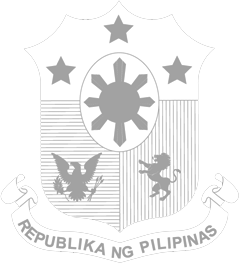GIVEN the “chronic infrastructure gap” in the Philippines, the government must look into different modes of funding and project-implementation schemes to improve the speed of the delivery of much-needed infrastructure to Filipinos.
This was the consensus among panelists at the infrastructure-funding forum of Euromoney Conferences in Bonifacio Global City on Monday.
Asian Development Bank Principal Investment Offer Alix Burrell said her group believes that there is room for all modes of infrastructure-funding schemes in the Philippines—including the Public-Private Partnership (PPP) Program.
“The infrastructure gap in the Philippines is really chronic,” she said. “There is room for PPPs to play in the infrastructure-development game.” Burrell added it is a matter of “choosing” the right mode.
PPP Center Director Lawrence Velasco agreed, saying the government is now devising ways on how to properly tag infrastructure projects based on risks.
“We have always emphasized that there has to be a systematic way for us to decide when it should be hybrid or when it should be an integrated PPP model,” he said. President Duterte’s economic managers have long advocated the use of hybrid financing to implement infrastructure deals.
Hybrid deals, in a nutshell, are infrastructure projects that are funded under official development assistance (ODA) packages or through taxpayers’ money, with the intention of bidding out the operations and maintenance component to the private sector.
“One of the key changes in the program is us exploring new financing modes for infrastructure projects. It’s something that our different departments are looking into in trying to explore which ones are more advantageous,” Velasco said.
Today, the PPP Center is focusing on development of deals in the local-government level, as opposed to its former push for national infrastructure during the Aquino administration.
“We are in a very enormous infrastructure need in the country,” said James Abbott, partner at global law firm Allen and Overy. “The challenge in addressing this is which type of mode carries less risks.”
He added it is best to implement projects that are bankable through the PPP Program. These deals, he noted, should be intergenerational in nature and should be commercially viable to the private sector.
Infrastructure projects, Abott said, are best implemented under the hybrid mode, if they carry larger risks, including legal and commercial tussles. “The challenge is, there are some weaknesses or strengths in the PPP model that ODA can’t do, and vice versa,” he said.
Abott also lauded the Philippines for having the “most advanced PPP framework in Southeast Asia”, something that the previous government has worked on to achieve. He said this is a trait that the Duterte administration should capitalize on, as there are many foreign investors looking for infrastructure deals in the Asean.
“There is quite a strong appetite in investment in infrastructure in Southeast Asia, provided the regulatory framework,” Abott added.
For Burrell, who has experienced the effects of limited infrastructure in Metro Manila, what matters is to develop infrastructure in all possible ways and means, at a rate that is faster than the current.
“Deciding which mode is better used for infrastructure development—whether PPP or hybrid—should be weighed as opposed to the speed of implementation,” she said.
The Duterte administration is currently implementing its “Build, Build, Build” (BBB) program, which is touted as the government’s “most ambitious infrastructure plan.”
It lists 70 priority infrastructure projects that are seen to solve the infrastructure crisis that the Philippines faces today.
The new infrastructure thrust was born out of Duterte’s policy on increased infrastructure spending, an avenue wherein the previous administration failed miserably, with underspending plaguing government agencies tasked to develop crucial infrastructure, such as roads, rails and ports.
The majority of the projects under the newly minted BBB program—roughly 39 of 70 deals—were contracts either signed, implemented and started during the administration of former President Benigno S. Aquino III, according to estimates made by the BusinessMirror.
By Lorenz S. Marasigan

